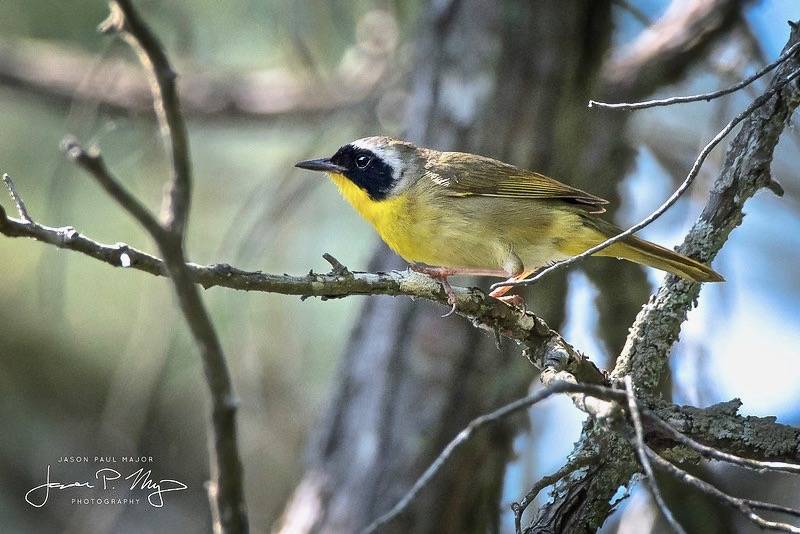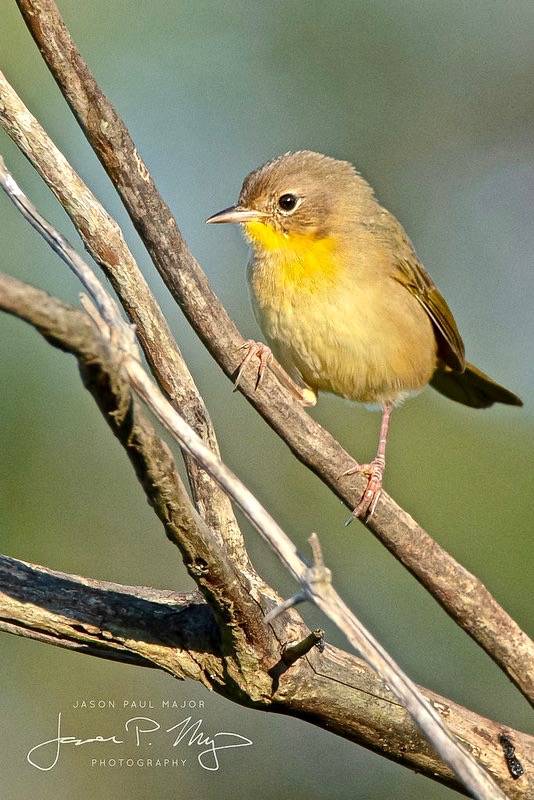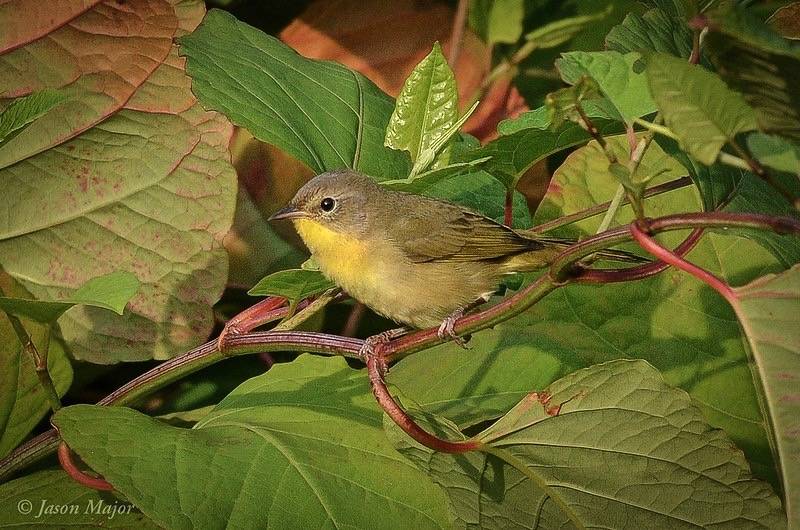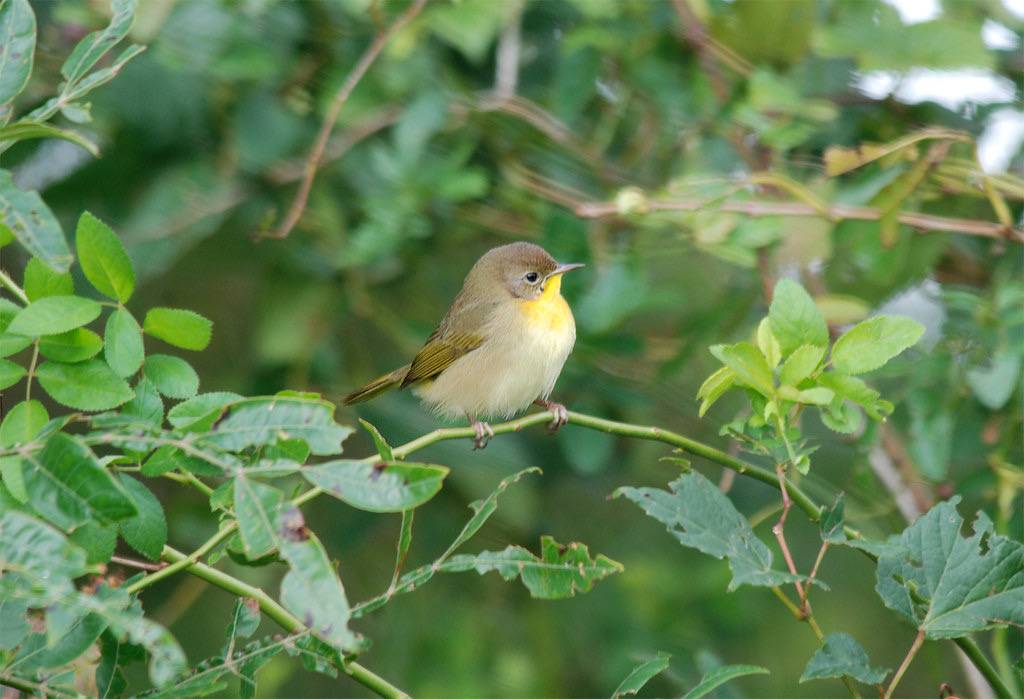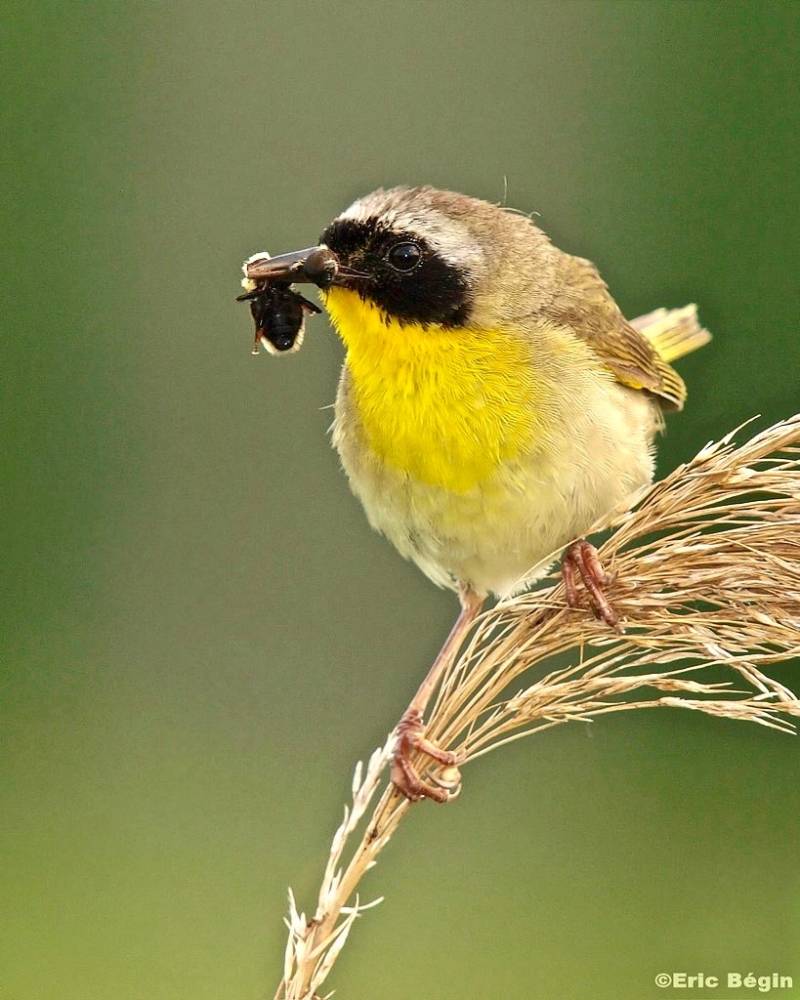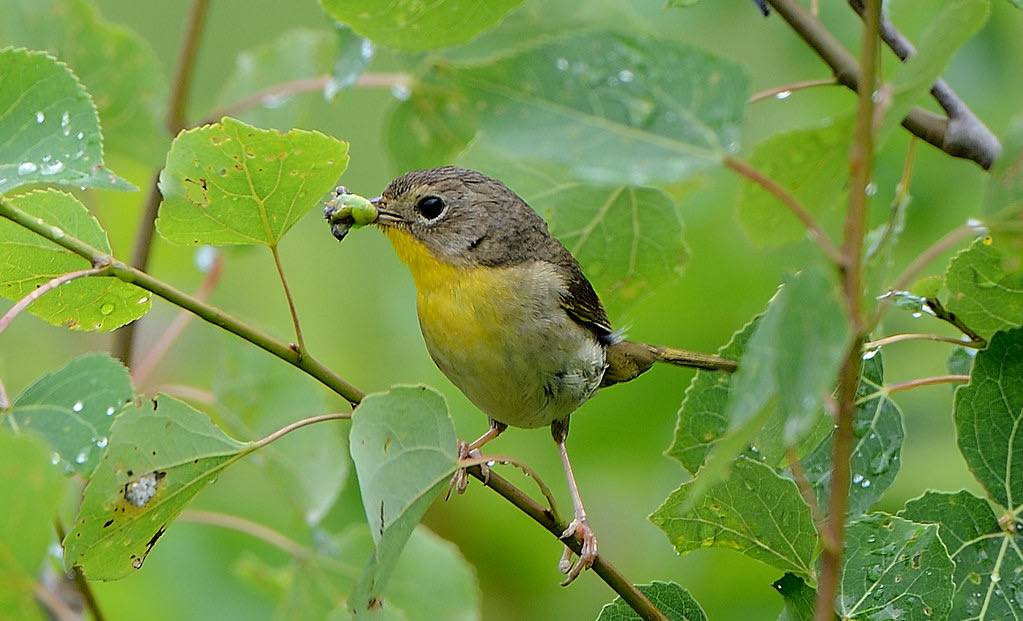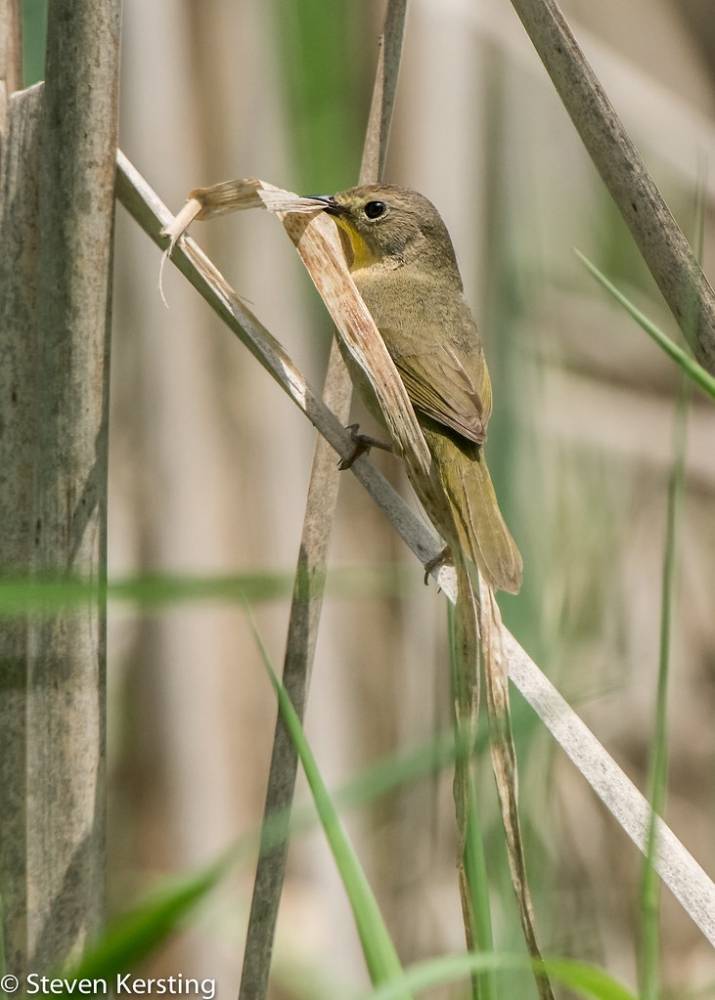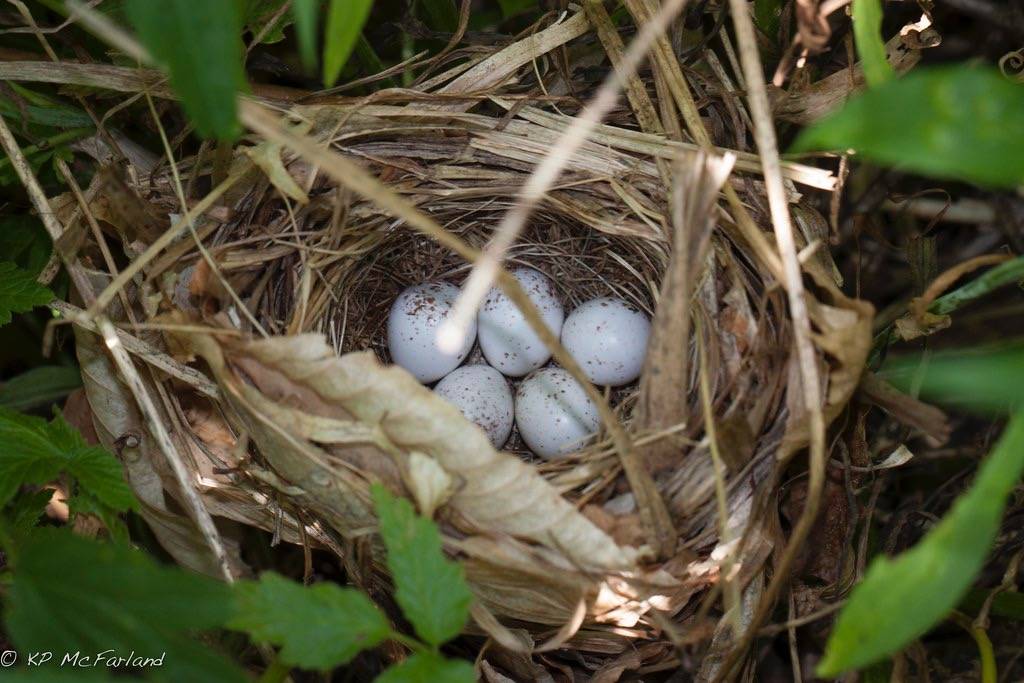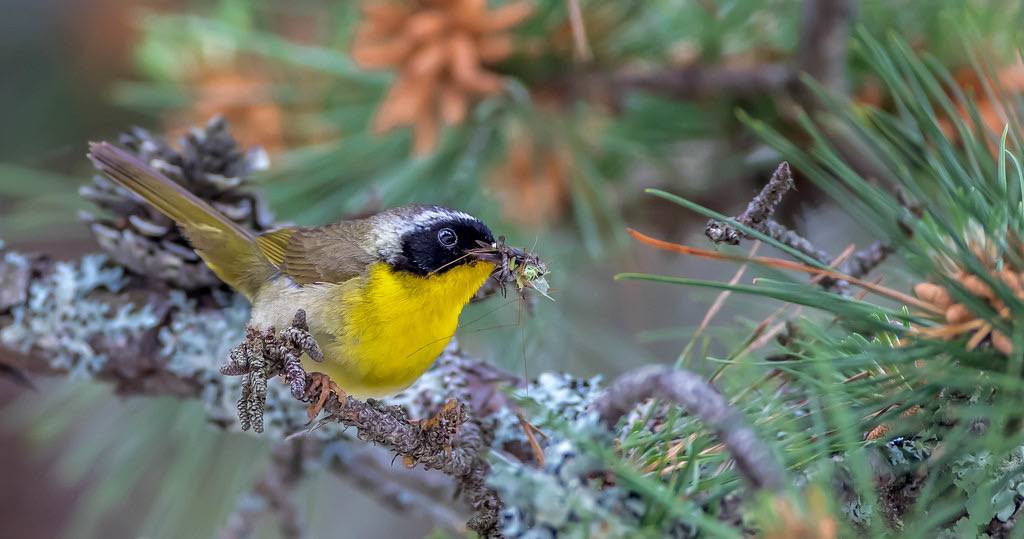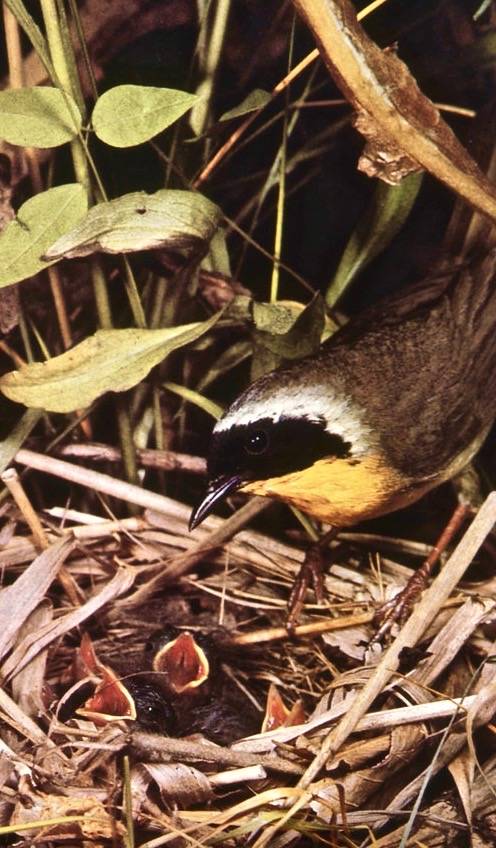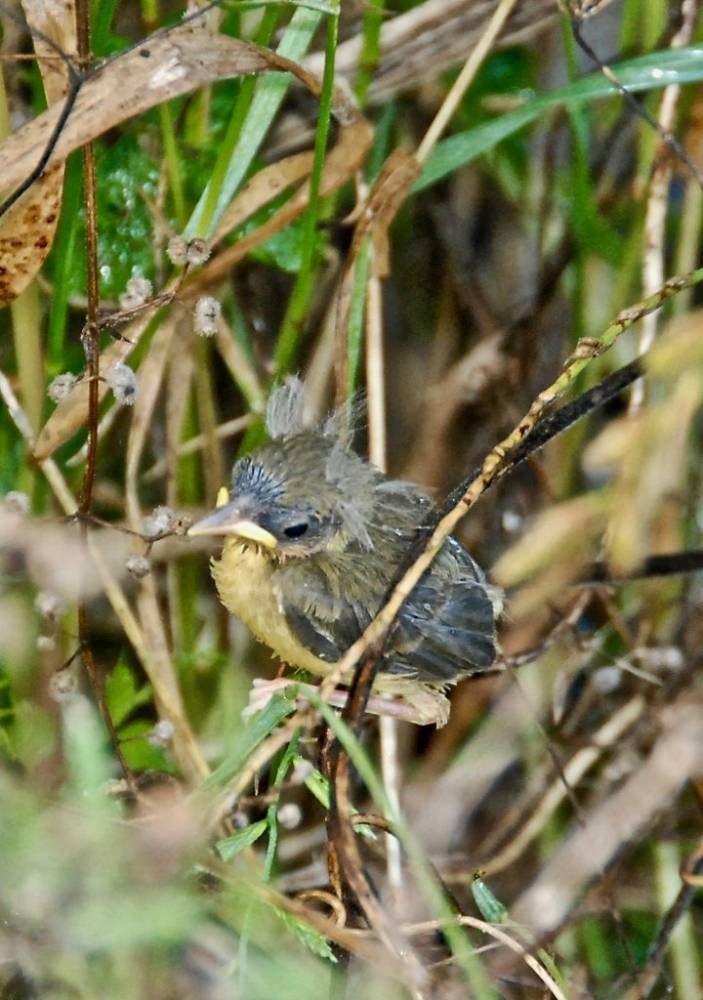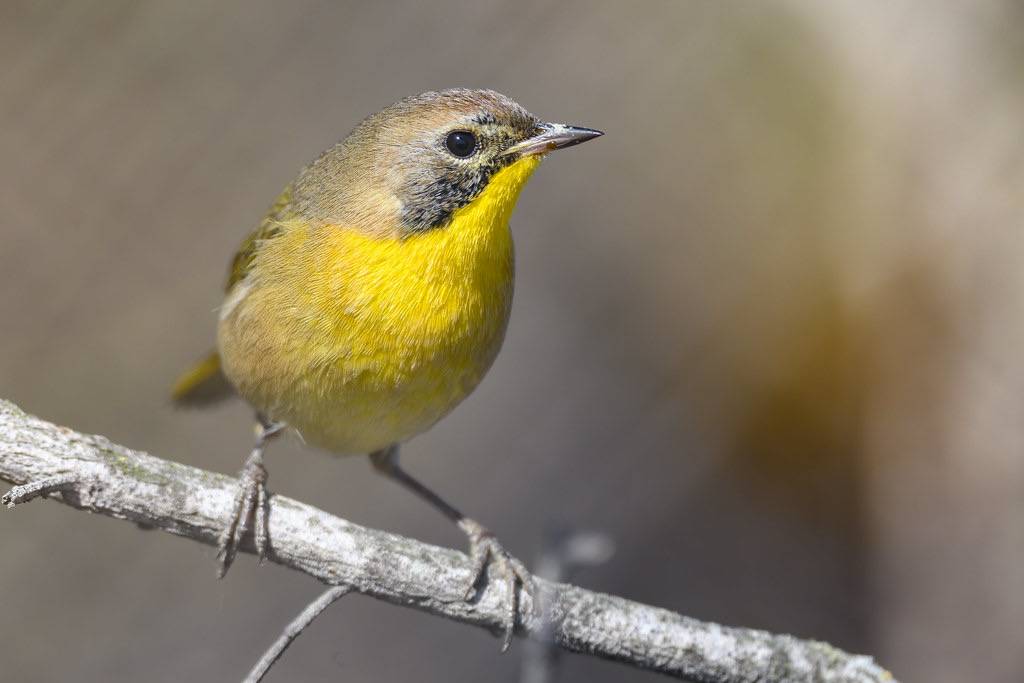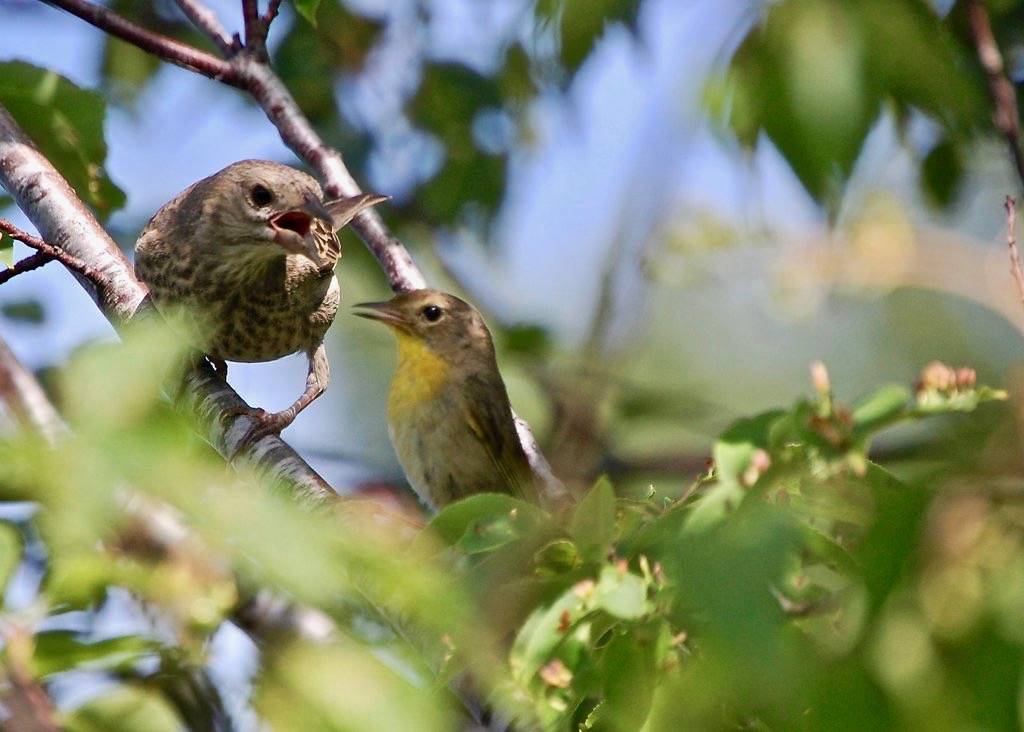Common Yellowthroat
At Salter Grove, the Common Yellowthroat has been sighted in marshy or wet habitats such as the foot of Audubon Hill, the swale north of the driveway into the park, as well as near the vernal pond. The timing of these sightings suggests that these were migrants passing through the park.
Also called the Yellow Bandit in the Midwest, the Common Yellowthroat breeds from southern Canada to central Mexico and is the only warbler species to nest in marshes and other wet areas with dense vegetation. Northern birds winter in the southern part of the species' range while southern breeders tend to be year-round residents. Even during migration, they are rarely found in dry habitats.
Conversion of wetlands to agriculture or housing would cause an immediate decline in the Common Yellowthroat because it only nests in marshes. Pesticides or other pollutants that affect insect prey would impair breeding success because of diminished food for both parents and nesltings.
Brood parasitism also reduces the population of this warbler. Despite the precautions it takes to hide its nest in dense vegetation, the Common Yellowthroat is a favorite host of the Brown-headed Cowbird, a brood parasite.

